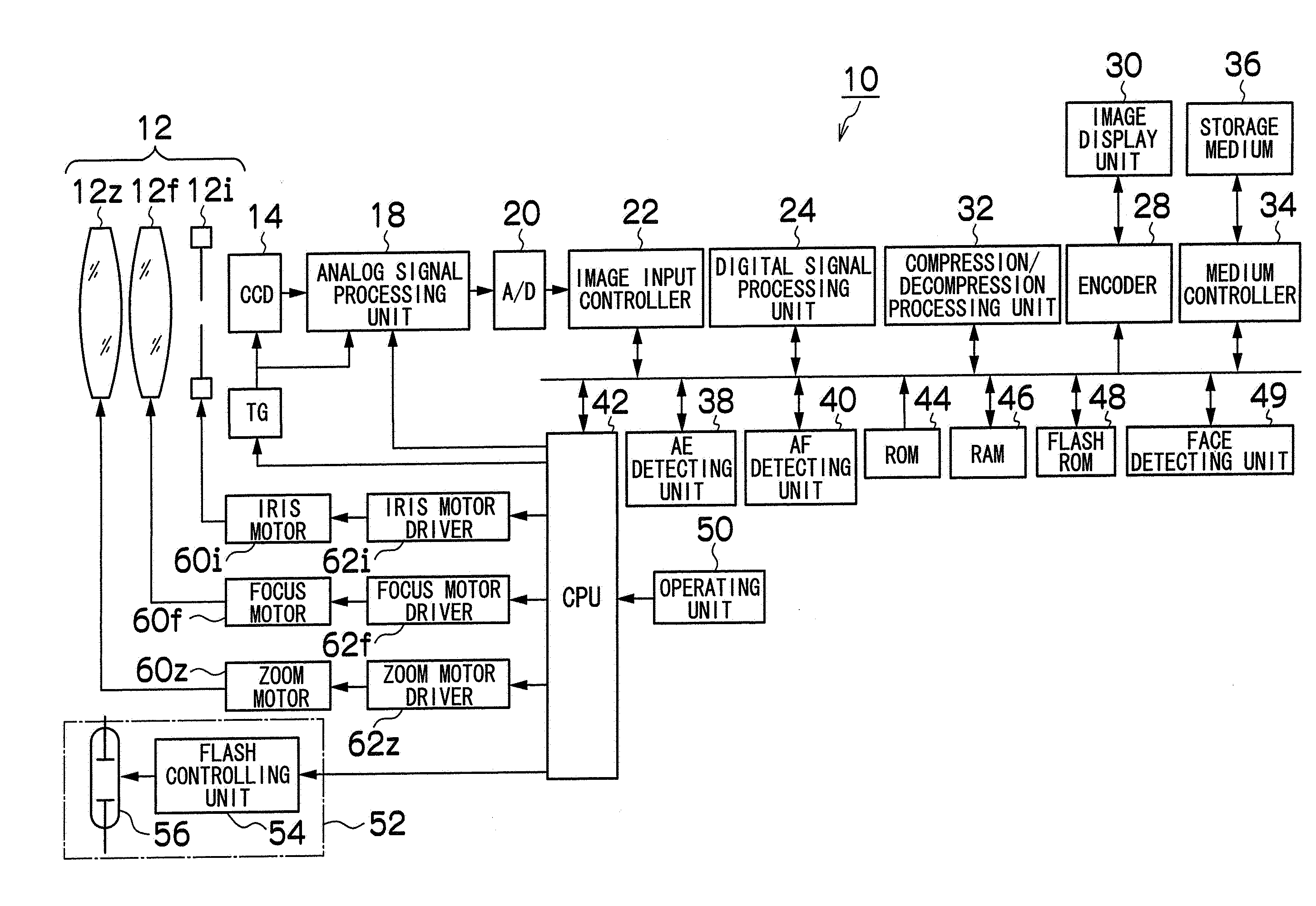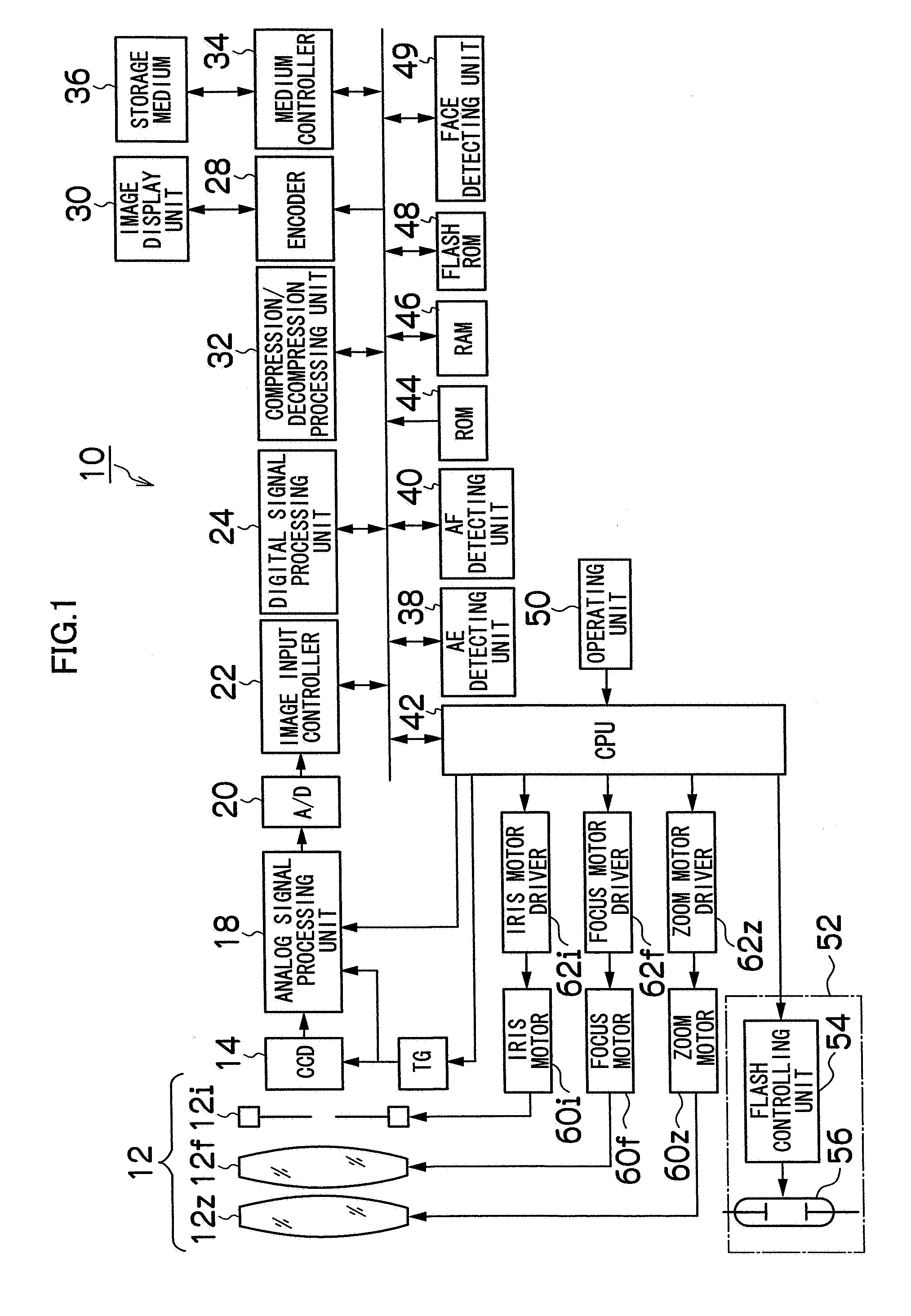White balance correcting method and image-pickup apparatus
a technology of image pick-up apparatus and white balance correction, which is applied in the direction of color television details, television systems, color signal processing circuits, etc., can solve the problems of low accuracy of final white balance gain calculated by digital cameras described in japanese patent application laid-open no. 2003-309854
- Summary
- Abstract
- Description
- Claims
- Application Information
AI Technical Summary
Benefits of technology
Problems solved by technology
Method used
Image
Examples
first embodiment
[0074]FIG. 3 is a flowchart indicating the first embodiment of the digital camera 10 according to the present invention, specifically showing calculation of the WB gain in the flash photographing.
[0075]In the figure, when the shutter button is pressed all the way down, the non-emitted image and the pre-emitted image for metering flash are photographed before the main photographing (switch S10). That is, the non-emitted image is captured without emitting the flash device 52 before the main photographing, and then the flash device 52 is caused to perform the pre-emission with a predetermined amount of emission and the image is photographed, and the pre-emitted image photographed in the pre-emission is captured. The non-emitted image and the pre-emitted image may be photographed in the reverse order.
[0076]Then, an amount of emission calculating circuit 25A in the metering unit 25 shown in FIG. 2 calculates the amount of emission in the main emission required for photographing the main ...
second embodiment
[0106]FIG. 7 is a flowchart showing a second embodiment of the digital camera 10 according to the present invention. The same parts as those in the first embodiment shown in FIG. 3 are designated by the same step numbers and omitted from the detailed description.
[0107]The second embodiment is for processing a human face as a main subject when the face is detected. As shown in FIG. 7, the second embodiment is the first embodiment with processing of the steps S30, S32 and S34 added.
[0108]At step S30, whether the angle of view of each of the non-emitted image and the pre-emitted image photographed at step S10 includes a face or not is determined. If no face is included, the operation proceeds to step S12, where the same processing as that in the first embodiment is performed. If a face is included, the operation proceeds to step S32.
[0109]At step S32, the amount of emission in the main emission required for photographing the main subject at the target brightness value is calculated bas...
third embodiment
[0117]FIG. 10 is a flowchart showing the third embodiment of the digital camera 10 according to the present invention. The same parts as those in the first embodiment shown in FIG. 3 are designated by the same step numbers and omitted from the detailed description.
[0118]The third embodiment is for preventing the variation in the amount of emission in the main emission from affecting calculation of the WB gain (white balance correction). As shown in FIG. 10, the third embodiment is the first embodiment with processing at steps S40, S42, S44 and S46 added.
[0119]At step S40, the brightness value is calculated from the main emitted image obtained at the flash photographing (main photographing) and whether the brightness value is appropriate (target brightness value) or not is determined. If the target brightness value is matched, the operation proceeds to step S20 as in the first embodiment. If the target brightness value is not matched, the amount of emission in the main emission is co...
PUM
 Login to View More
Login to View More Abstract
Description
Claims
Application Information
 Login to View More
Login to View More - R&D
- Intellectual Property
- Life Sciences
- Materials
- Tech Scout
- Unparalleled Data Quality
- Higher Quality Content
- 60% Fewer Hallucinations
Browse by: Latest US Patents, China's latest patents, Technical Efficacy Thesaurus, Application Domain, Technology Topic, Popular Technical Reports.
© 2025 PatSnap. All rights reserved.Legal|Privacy policy|Modern Slavery Act Transparency Statement|Sitemap|About US| Contact US: help@patsnap.com



